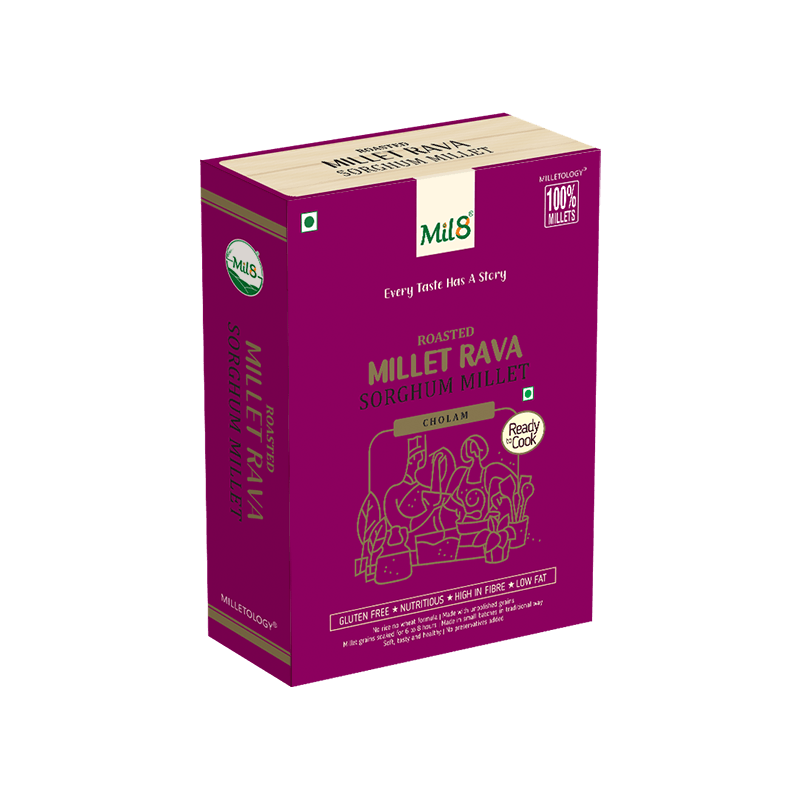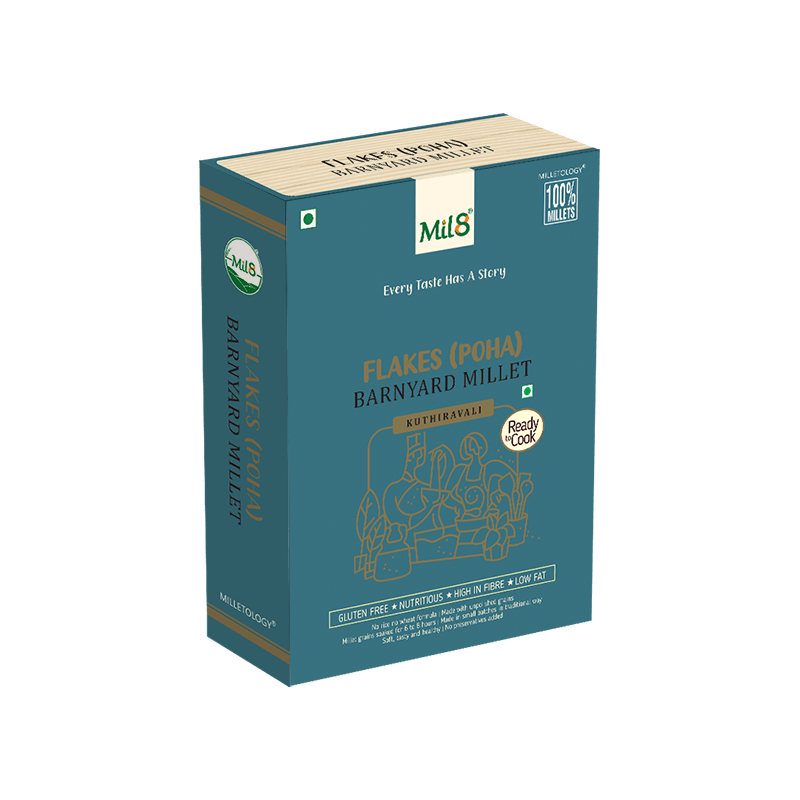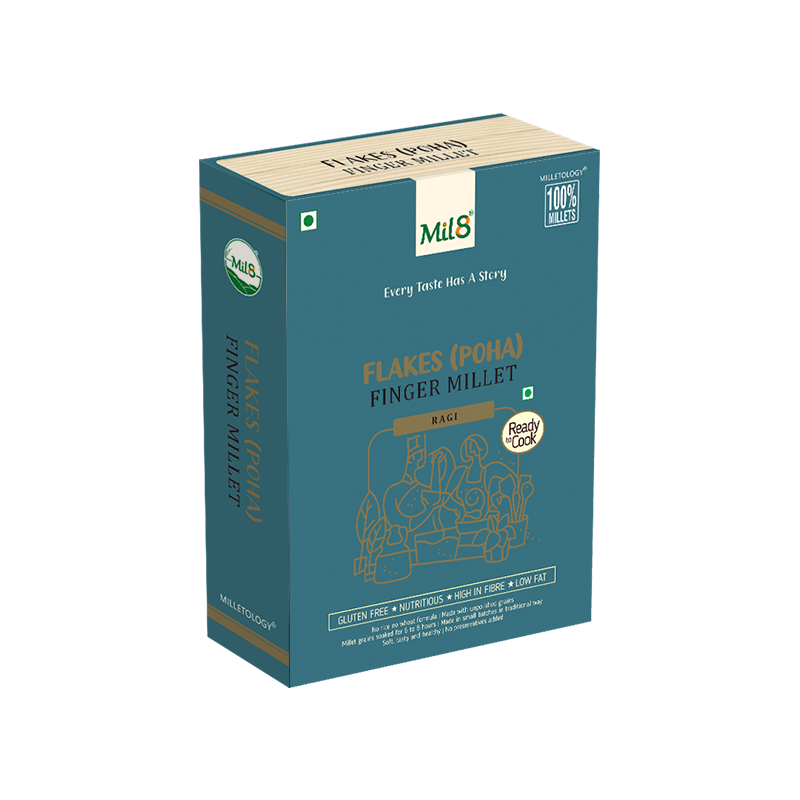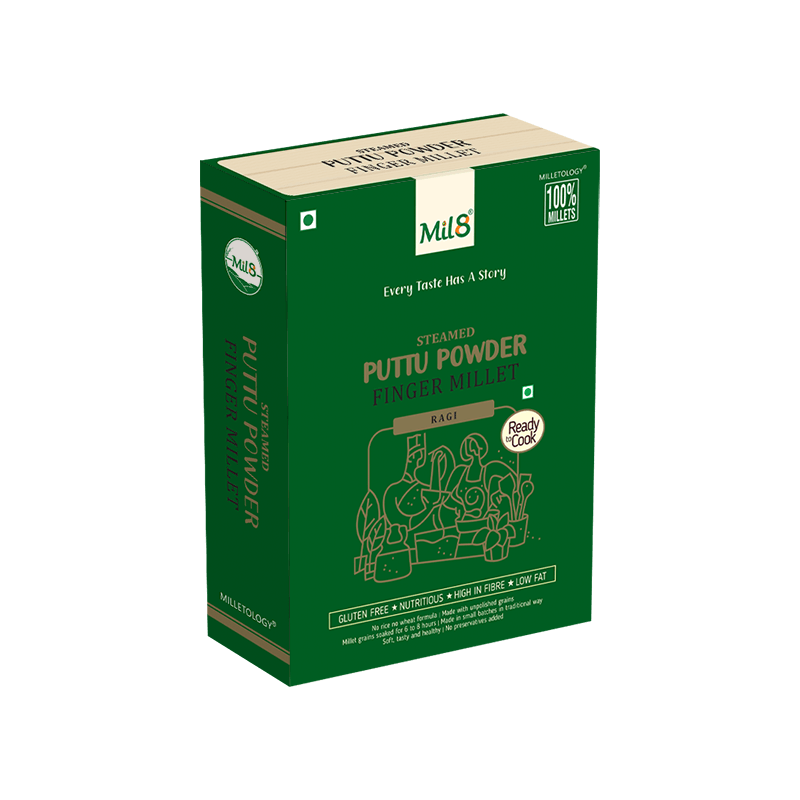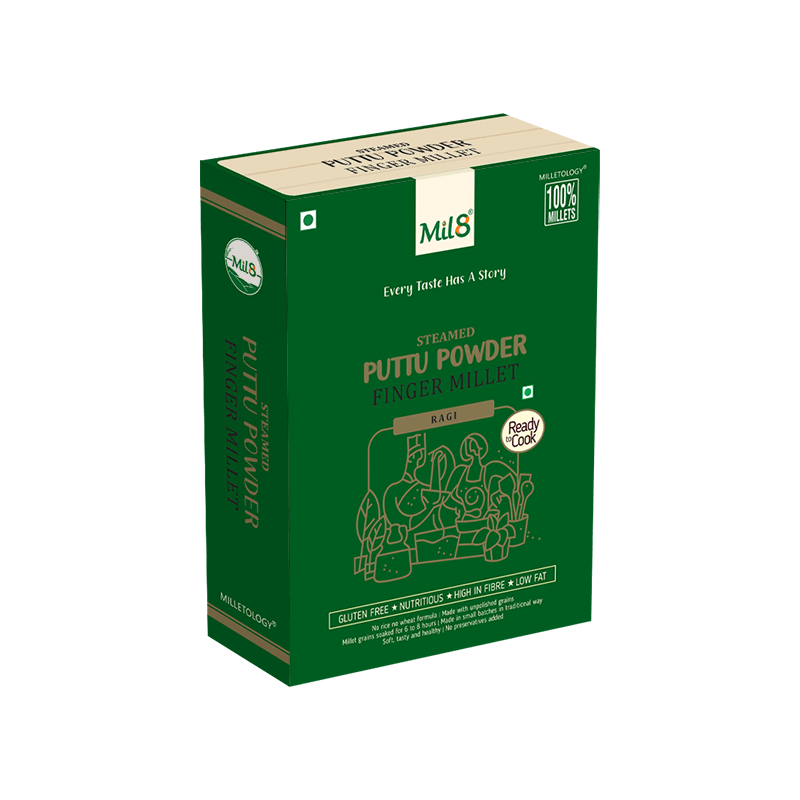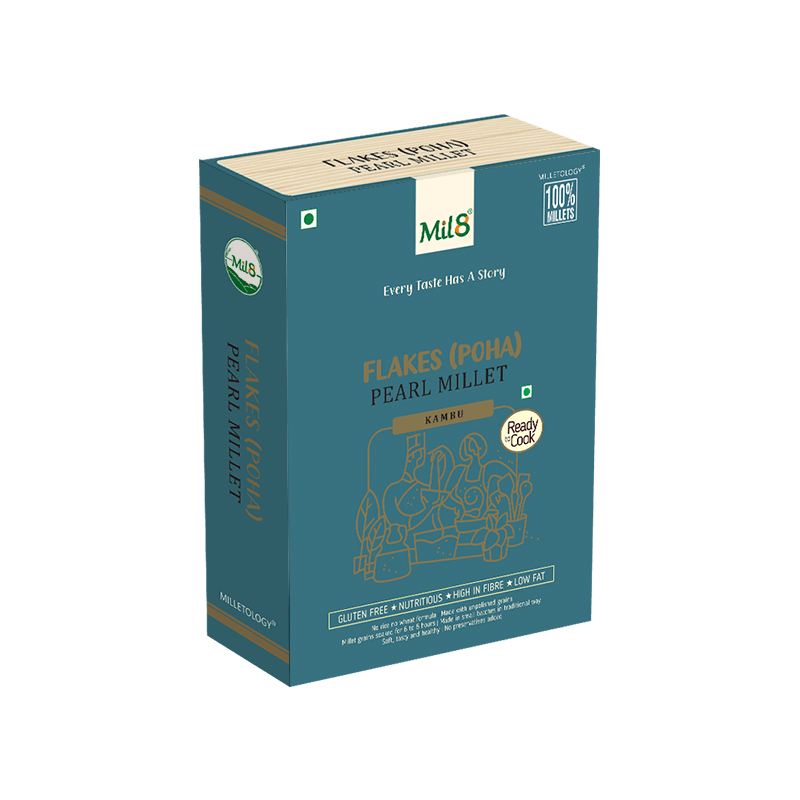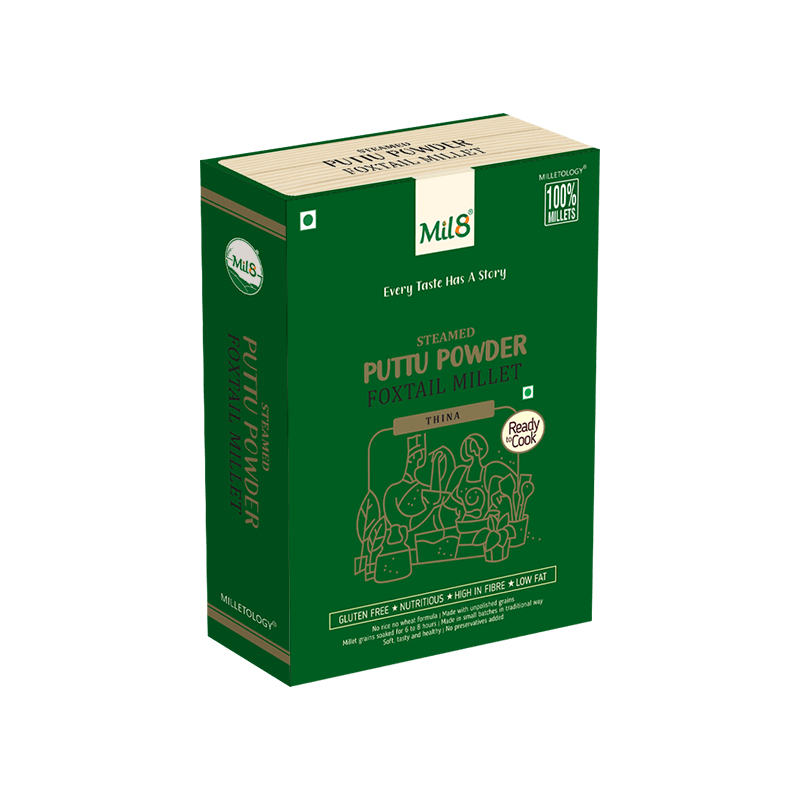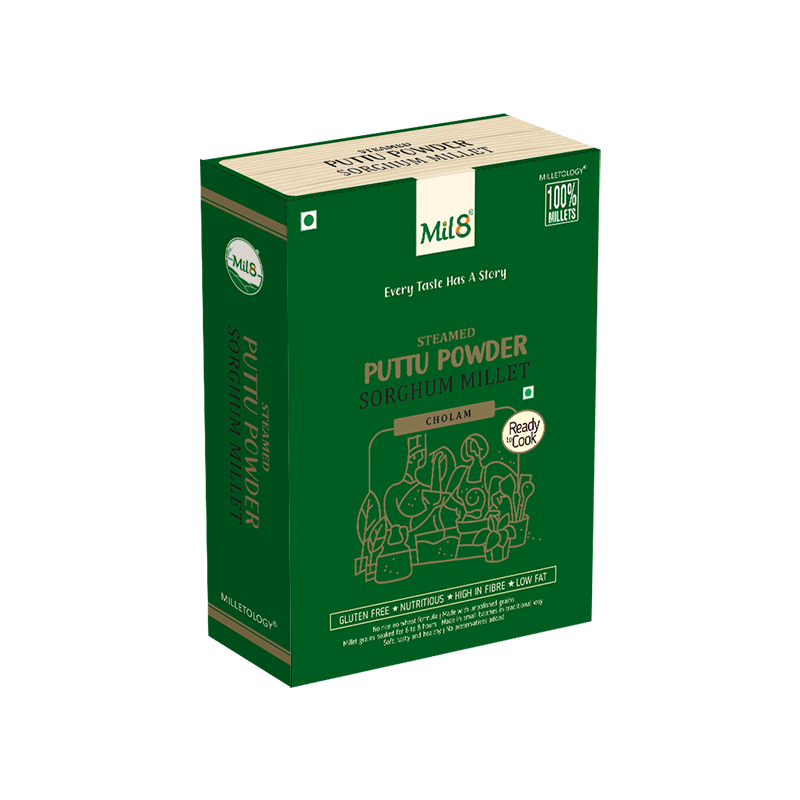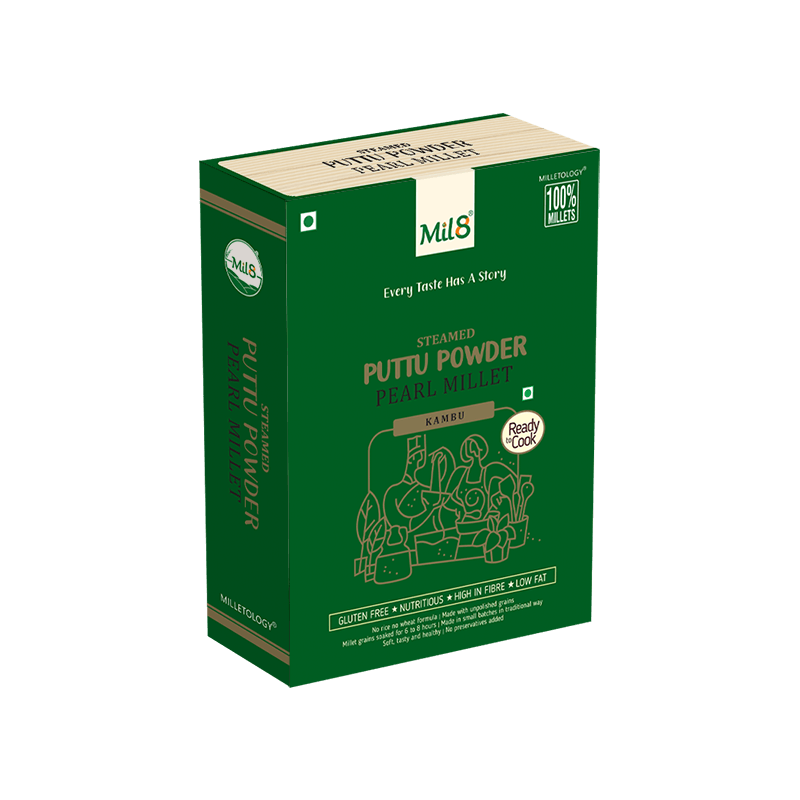VARAGU RAVA
Varagu Rava, also known as Kodo Millet Semolina, can be used as a nutritious and gluten-free alternative to traditional semolina. To prepare, simply substitute Varagu Rava in your favorite recipes such as upma, idli, dosa, or desserts. Boil it for a wholesome breakfast porridge or mix it with vegetables for a healthy pulao. Its nutty flavor adds a unique touch to various dishes while providing essential nutrients. Experiment with Varagu Rava in your cooking to enjoy the benefits of this versatile and nutritious millet semolina.
Instructions:
-
Dry roast the varagu rava in a pan on low heat until it turns light golden brown and emits a nutty aroma. Keep stirring continuously to prevent burning. Once roasted, transfer it to a plate and set aside.
-
In the same pan, heat the oil over medium heat. Add the mustard seeds and cumin seeds. Allow them to splutter.
-
Add the chopped onions, green chili, and ginger. Sauté until the onions turn translucent.
-
Add the chopped tomatoes and green peas. Cook until the tomatoes turn soft and mushy.
-
Pour in the water and add salt to taste. Bring the water to a boil.
-
Once the water comes to a boil, reduce the heat to low and slowly add the roasted varagu rava while stirring continuously to prevent lumps from forming.
-
Cover the pan with a lid and let the upma cook on low heat for about 5-7 minutes or until the varagu rava is cooked and all the water is absorbed.
-
Once the upma is cooked, turn off the heat. Garnish with chopped coriander leaves if desired.
-
Serve the varagu rava upma hot with a side of coconut chutney or pickle. You can also squeeze some lemon juice over the upma before serving for extra flavor.
Ingredients:
- 1 cup varagu rava (kodo millet semolina)
- 2 cups water
- 1 onion, finely chopped
- 1 tomato, finely chopped
- 1 green chili, chopped (adjust according to your preference for spiciness)
- 1/2 inch ginger, finely chopped
- 1/4 cup green peas (fresh or frozen)
- 2 tablespoons cooking oil
- 1 teaspoon mustard seeds
- 1 teaspoon cumin seeds
- A few curry leaves
- A pinch of asafoetida (hing)
- Salt to taste
- Fresh coriander leaves for garnish (optional)
- Lemon wedges for serving (optional)
Varagu Rava is a healthy option, packed with fiber, protein, and vital nutrients, aiding in digestion and providing sustained energy.
Varagu rava, or kodo millet semolina, is not only delicious but also packed with nutrition. Here's the approximate nutritional value per 100 grams of cooked varagu rava:
- Calories: 123 kcal
- Carbohydrates: 27 g
- Protein: 3 g
- Fat: 0.6 g
- Dietary Fiber: 1.2 g
- Calcium: 17 mg
- Iron: 0.5 mg
- Magnesium: 18 mg
- Phosphorus: 22 mg
- Potassium: 20 mg
- Vitamin B6: 0.1 mg
Incorporate Varagu Rava into your cooking by boiling 1 cup in 2 cups of water. Whether in upma or blended into dosa batter, this gluten-free grain adds a unique texture and nutritional value to your favorite dishes.
Varagu rava, or kodo millet semolina, can be used in various ways in cooking. Here are some ideas:
-
Upma: As described earlier, varagu rava can be used to make upma, a savory South Indian breakfast dish. It's a simple and delicious way to enjoy this nutritious grain.
-
Pongal: Varagu rava can be used to make pongal, a traditional South Indian dish made with rice and lentils. Replace the rice with varagu rava for a healthier twist on this classic dish.
-
Idli and Dosa: Varagu rava can be ground into a fine flour and used to make idli and dosa batter. It adds a nutty flavor and a nutritional boost to these popular South Indian breakfast items.
-
Porridge: Cook varagu rava with milk or water to make a nutritious porridge. You can sweeten it with honey or sugar and add your favorite nuts and fruits for extra flavor and texture.
-
Halwa: Varagu rava can be used to make halwa, a sweet Indian dessert. Cook the rava with ghee, sugar, and milk until it thickens and forms a pudding-like consistency. Garnish with nuts and serve warm.
-
Salads: Cooked varagu rava can be added to salads for a nutritious boost. Combine it with vegetables, herbs, and dressing of your choice for a tasty and healthy salad.
-
Soups and Stews: Add cooked varagu rava to soups and stews for a hearty and nutritious addition. It adds texture and thickness to the dish while increasing its nutritional value.
-
Baking: Varagu rava can be used in baking recipes that call for semolina or wheat flour. You can use it to make cakes, cookies, bread, and other baked goods for a gluten-free option.

